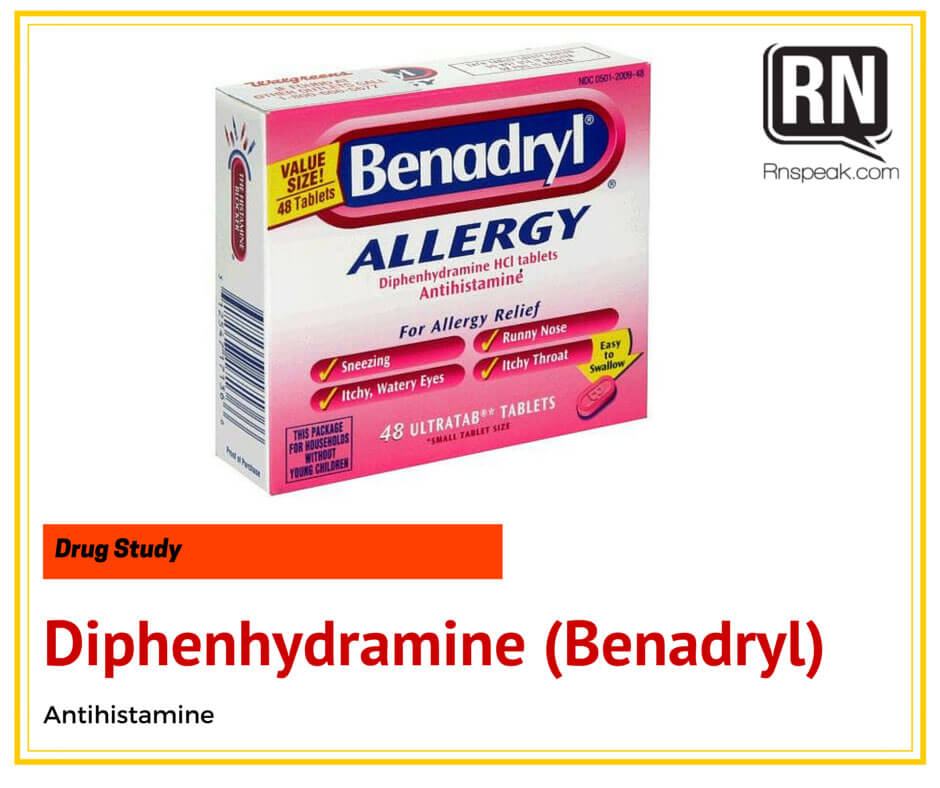
Diphenhydramine is a common antihistamine used by the general public to treat allergies.
Generic Name: Diphenhydramine hydrochloride
Brand Name: Benadryl
Classification: Antihistamine, second generation, ethanolamine
Uses:
- Treatment of hypersensitivity reactions
- Treatment of motion sickness
- Treatment of Parkinsonism
- Nighttime sleep aid
- Antitussive
Actions:
- Has high sedative, anticholinergic and antiemetic effects
- Blocks the action of acetylcholine
- Blocks H-1 receptors on effector cells of the GI tract, blood vessels, and respiratory tract
Contraindications:
- Use with other products containing diphenhydramine
- Hypersensitivity to antihistamines
Special Concerns:
- Increases the risk of cognitive decline in the elderly
- Use with caution in clients suffering from the following: Increased Pressure in the Eye, Closed Angle Glaucoma, Chronic Difficulty having a Bowel Movement, High Blood Pressure, Stenosing Peptic Ulcer, Blockage of Urinary Bladder, Enlarged Prostate, Cannot Empty Bladder, Overactive Thyroid Gland
Side-Effects:
- Drowsiness
- Constipation
- Diarrhea
- Dizziness
- Dry mouth/nose/throat
- Headache
- Anorexia
- N&V
- Anxiety
- GI upset
- Asthenia
Dosage:
Per Orem: 25-50 mg TID- QID
IV: 10-50mg up to 100mg/IV
Nursing Considerations:
- Give full prophylactic dose 30min. prior to travel if used as a prophylaxis for motion sickness
- Take similar doses with meals and at bedtime
- Do not use more than 2 weeks to treat insomnia
- For IV, may give undiluted
- Do not exceed IV rate of 25mg/minute
- Drug causes drowsiness. Avoid activities requiring mental alertness
- Use sun protection as it may cause photosensitivity
- Use sugarless candy/gum to diminish dry mouth effects
- Avoid alcohol and other CNS depressants
- Stop therapy 72-96 hr. prior to skin testing. Report adverse effect and lack of response







